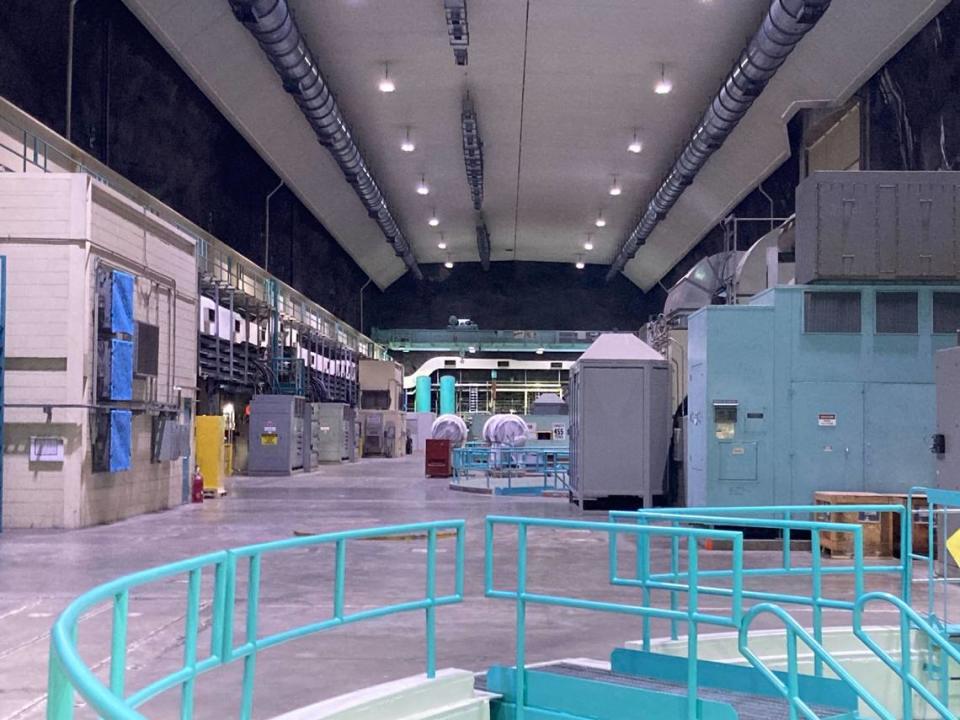Visitors to Duke Energy’s Bad Creek Hydro Station must enter an inclined tunnel to visit the power plant, which is hidden in a mountain between two man-made lakes.
The tunnel ends in a cave that is slightly longer than a football field. The sound of a huge air conditioning system fills the room, necessary to prevent the pipes that carry electricity generated here from overheating. Pipes snake across the walls and ceilings of the cave, often pressed against the exposed blue granite.
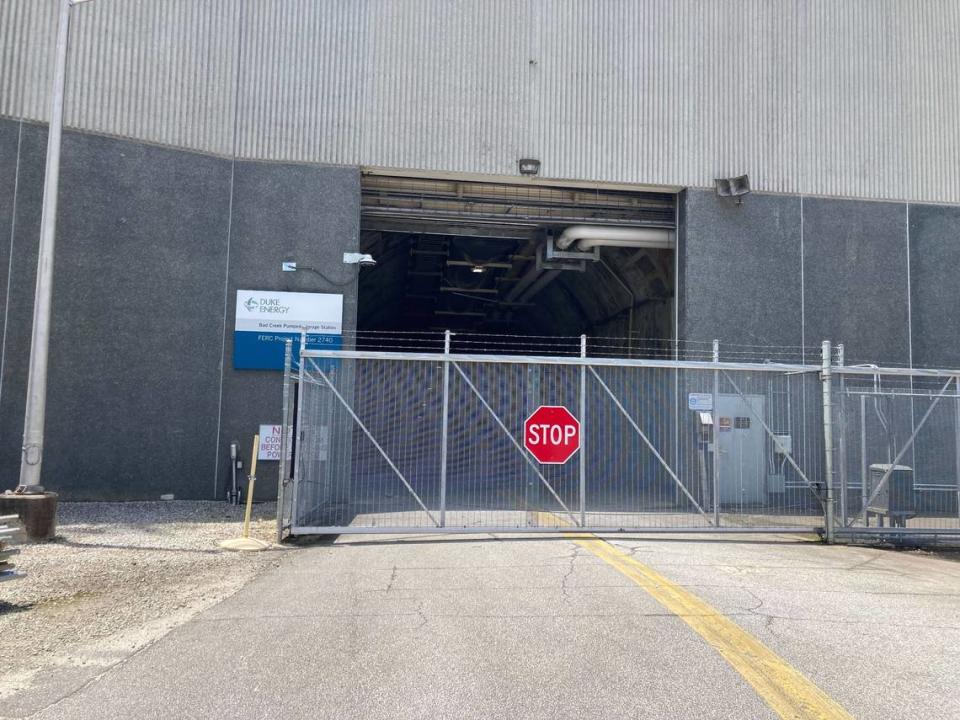
Preston Pierce, general manager of Duke’s hydroelectric facility, believes facilities like Bad Creek will play a crucial role as the company tries to keep its service reliable while transitioning to technologies like solar and wind that don’t always generate power.
“We consume it when it no longer has value, and we release it when it has the highest value,” says Pierce, who likens the system to a giant battery.
Duke recently completed a five-year, approximately $200 million project to overhaul the four 75-foot turbines at Bad Creek. The project, which increased the plant’s generating capacity, was the first major maintenance at the plant since it opened in 1991.


These turbines form the heart of the facility. When demand is low, they use excess energy to draw water from Lake Jocassee to the upper reservoir.
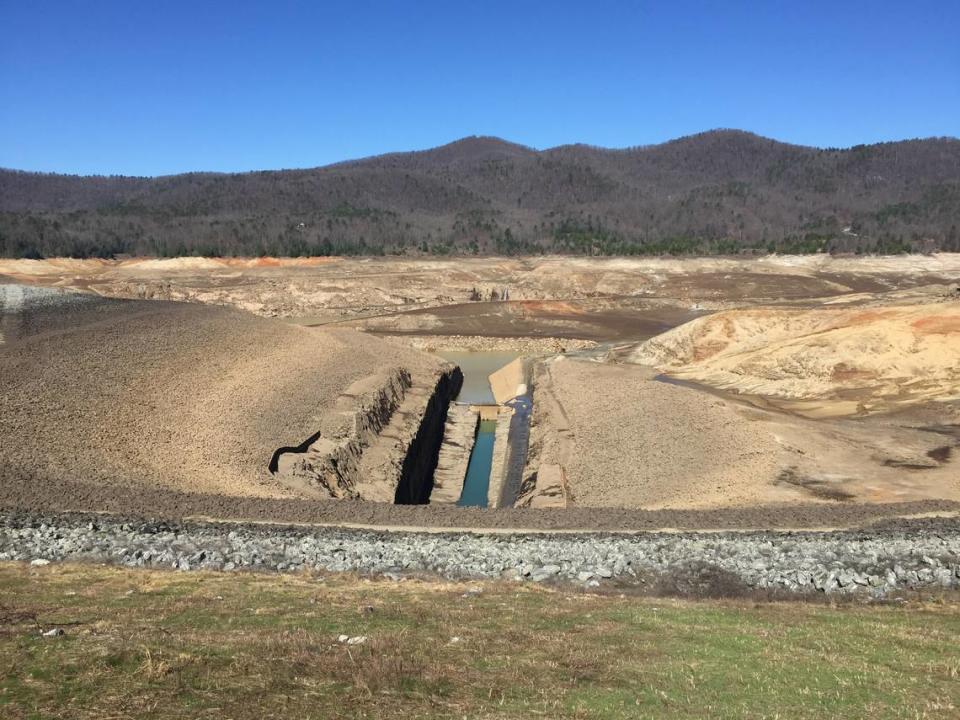

When demand is high, Duke opens a 36-foot spillway into the upper reservoir. The water falls straight down a 250 meter shaft, which makes a bend and drops another 100 meters before reaching the turbines.
The water flows through the turbines, its power spinning them and generating electricity as it flows into Lake Jocassee. When the turbine generates energy, it rotates in the opposite direction as when it pumps. The turbines push water up through the same shaft through which it came down.
“We’re just moving water back and forth,” Pierce said.
Duke operates the entire system from Charlotte, including another plant, the Jocassee Pumped Storage Generating Station on the southeast corner of the lake.
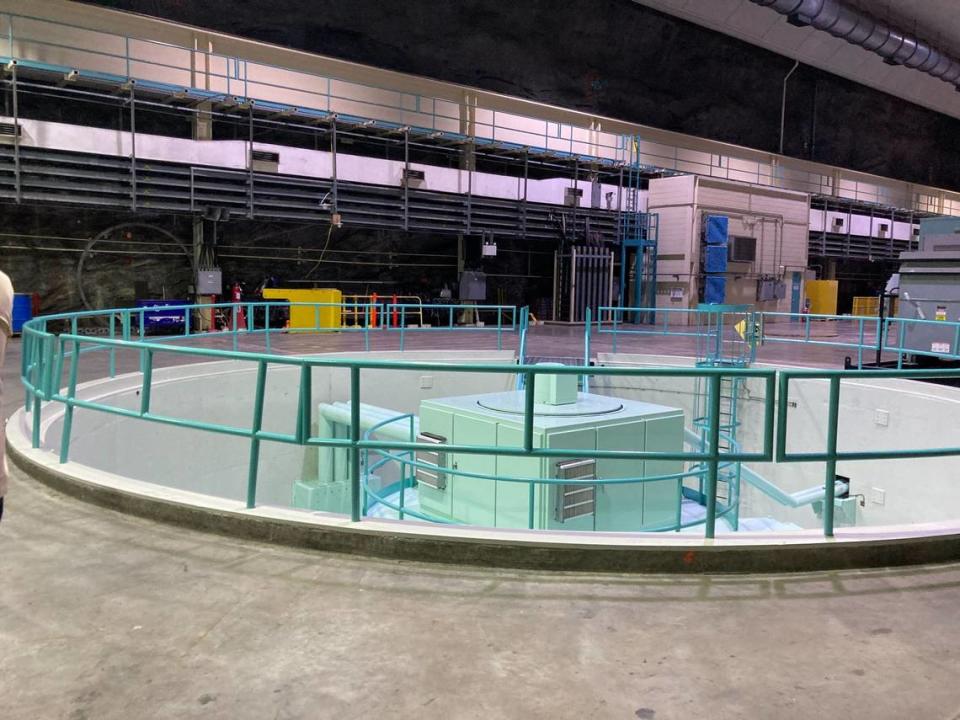

The company draws Bad Creek’s power from its North and South Carolina electric grids and supplies energy to customers in both states.
Bad Creek can generate 1,680 megawatts of electricity, enough to power approximately 1.3 million homes. The reservoir can supply that energy for 24 hours.
“I think this is the only proven long-term storage technology we have,” says Pierce.
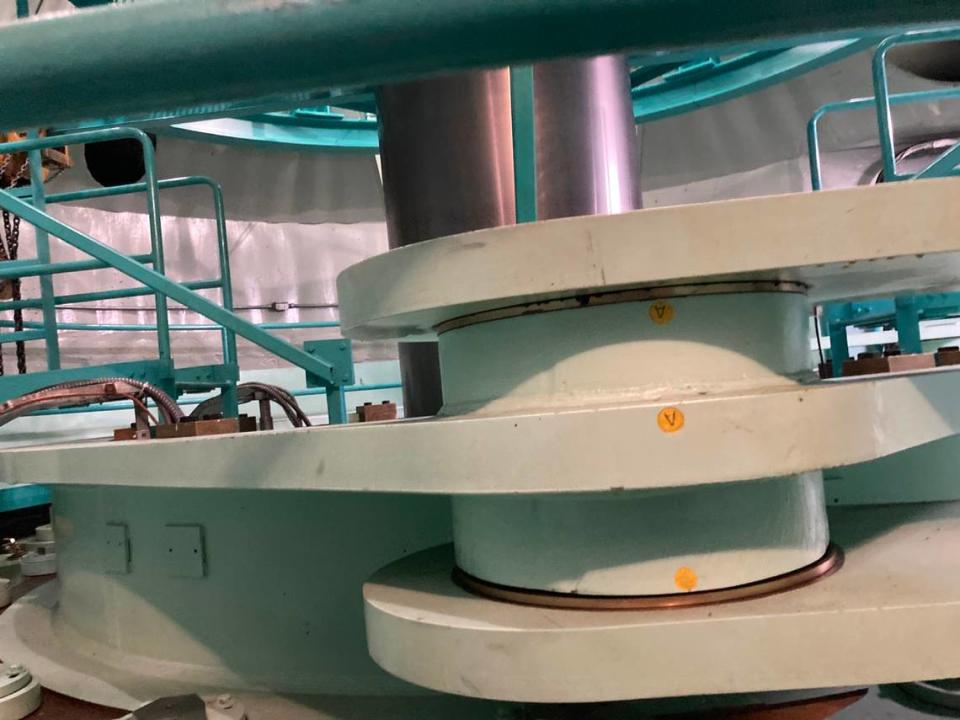

Duke must renew the facility’s Federal Energy Regulatory Commission license by 2027.
The company is exploring building a second power plant with four additional turbines at Bad Creek, doubling the amount of energy available. Duke could complete the project in 2033. That project would need federal approval, as well as approval from utility regulators in North and South Carolina.
Duke would actually build the new station parallel to the existing one, moving water between the same upper reservoir and Lake Jocassee. The company is optimistic that this will make environmental permitting significantly easier than building a whole new set of reservoirs.
Company officials aren’t yet saying what the project could cost, but some estimates put it at around $5 billion — about five times as much as the billion dollars it cost to hollow out the mountain and replace the entire facility in the 1980s. build. The Inflation Reduction Act includes incentives that could provide Duke with tax credits worth up to 30% of its investment.
Although adding a pump station would double the amount of power available in Bad Creek, it would also halve the amount of time energy is available to about 12 hours. On the other hand, Pierce said, it would also cut the time it takes to fill the upper reservoir in half, from about 30 hours when it is at its lowest, to about 15 hours.
“We already have both reservoirs in place, the geology in Upstate South Carolina is perfect for it, so we definitely think it’s a good option. But it is one we continue to evaluate,” said Ben Williamson, a Duke spokesman.
If Duke were to try to achieve the same storage with traditional batteries, Williamson said, it would need to cover about 1,200 acres to achieve the same power. And batteries currently on the market have a capacity of about four hours. So to match the 12 hours of storage capacity of a second Bad Creek powerhouse, Duke would have to build 3,600 acres of batteries.
“As far as long-term storage is concerned, batteries are not there yet. They cannot provide the amount of storage capacity that pumped storage can provide,” said Williamson.
